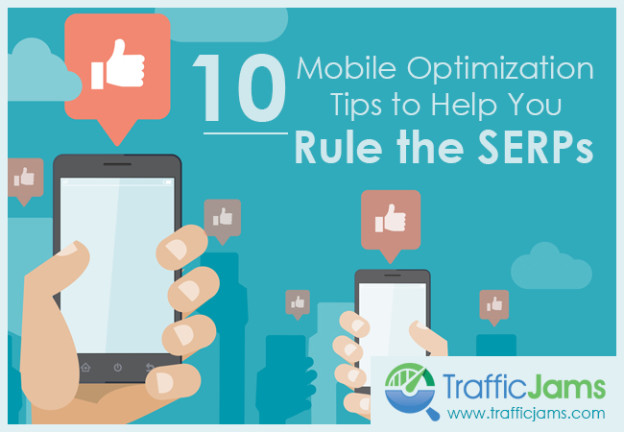Mobile optimization is something that savvy webmasters and business owners have been doing for years. But, with the recent Google algorithm update that actively penalizes unresponsive sites, designing for handheld devices is no longer optional. It’s a necessity if your business intends to compete online.
More people are searching for products and services from handheld devices, with tablets and smartphones leading the pack. In addition, at just over 8%, tablets drive conversion rates that rival those generated by PC users. What does that mean for you as a business owner?
Simple: if your website isn’t responsive, you’ll lose out on potential customers as Google won’t include your non-mobile site in mobile search results. But, having a mobile friendly site isn’t enough. You still need to provide a seamless experience to your audience…regardless of the device they’re using.
We’re here to offer you 10 mobile optimization tips that will not only ensure that you’ll be included in mobile search results but, help you provide a better user experience for your audience. No matter what kind of device they’re on.
Test your site: The first thing you’ll want to do is test your site for mobile compatibility using Google’s Mobile Friendly Test. It generally takes less than 30 seconds and will give you a clear cut answer as to whether you site is, or isn’t, ready for viewing on handheld devices. If your site isn’t mobile friendly, don’t worry – we have plenty of solutions that can help you get up to speed without any coding involved,
Install a mobile responsive theme. Making sure your site complies with Google’s mobile algorithm update can be as simple as installing a responsive theme. The key is choosing a theme that supports all devices and offers the right experience for your audience. You don’t have to be a coding wiz to get your mobile friendly site up and running – there are plenty of places you can pick up high quality responsive themes that you can modify yourself or work with one of our web designers to get the job done for you.
Simplify the user experience. When optimizing your site for mobile, it’s important to keep the user experience in mind with simple design and navigation elements. People on handheld devices have smaller screens and limited space – they don’t need more options. When it comes to your navigation elements, focus on what’s most important and streamline your link options so that they can easily find what they’re looking for.
Get in the fast lane. Optimizing your site’s speed is important no matter what device your prospects are using but, when it comes to mobile it’s even more so. You can check your site’s speed for mobile and desktop using Google’s Page Speed Insights tool. The best part is that it offers actionable insights on issues that you can fix right away.
Limit images. They say a picture is worth a thousand words. Unfortunately, when it comes to your website, images worth thousands of kilobytes can really add up and slow things down. Although most mobile responsive themes will include code to resize your images based on the device, you can do your part by using images sparingly and installing a cache to help cut down on loading times.
Design for touch screens. One of the most obvious differences in the user experience between desktop and mobile users is how they physically navigate your site. Mobile users swipe and tap, whereas those on a desktop point and click. Clickable images, buttons, larger text and a swipe and tap interface make navigating your site so much easier.
Simplify input forms. Most people don’t like filling out forms but, if you’ve got an enticing offer, you’re sure to win more than a few hearts. If you want to increase your conversions on mobile, only ask for the information that is absolutely necessary and use drop down forms where possible.
Make it easy to find your contact info. When a person looks up your business on their mobile device, chances are they’re actually trying to find your contact info. So, make it easy for them. Put your phone number, address and email in a prominent place like your header so they can easily get in contact with you from any page.
Use mobile friendly fonts. Smaller screens on mobile and handheld devices can make some fonts hard to read. A good rule of thumb is to use a 16 point font as it reads better on smaller screens without the user having to enlarge the page. Also, using a sans serif font and limiting the variety of fonts to a maximum of two can help make your site easier to read on mobile devices.
Keep an eye on your metrics. Finally, you’ll want to measure the performance of your website for the mobile experience just as you would for desktop. You can view data about mobile users in your Google Analytics interface and even segment those users down to the type of device they are using.
So, if you haven’t optimized your website yet, now is the time to get started. Tackling even one of these 10 tips for mobile optimization per day can help boost your visibility across a variety of devices and give you an edge over your competition. Of course, you don’t have to go it alone – call us at 855-599-9998 or email us at sales@trafficjams.com and we’ll be happy to help.

